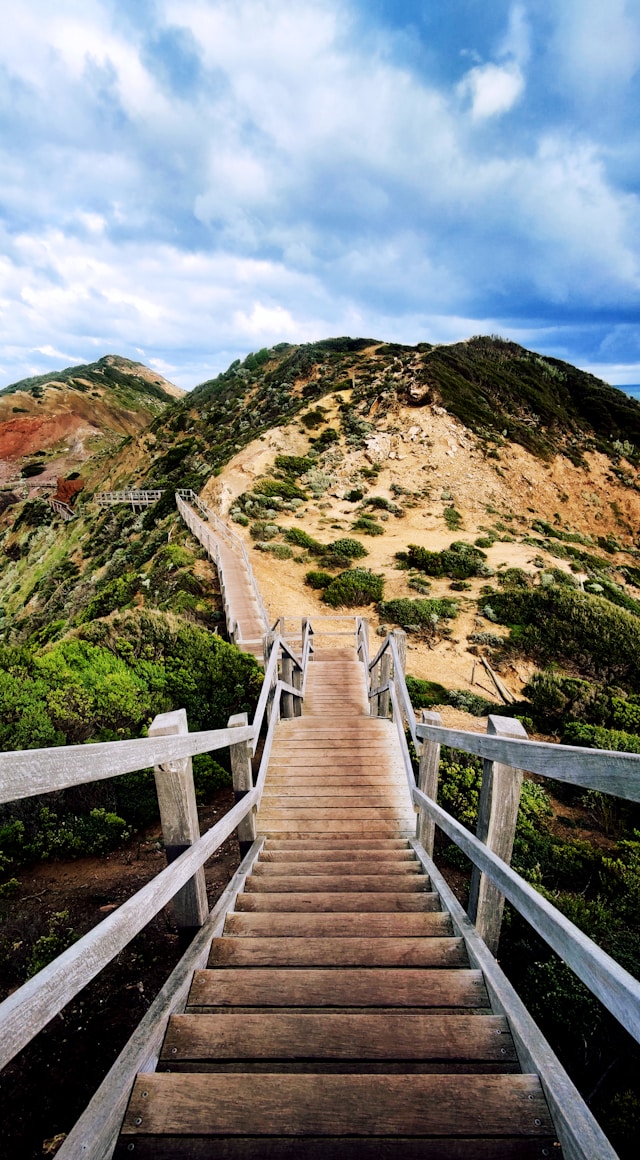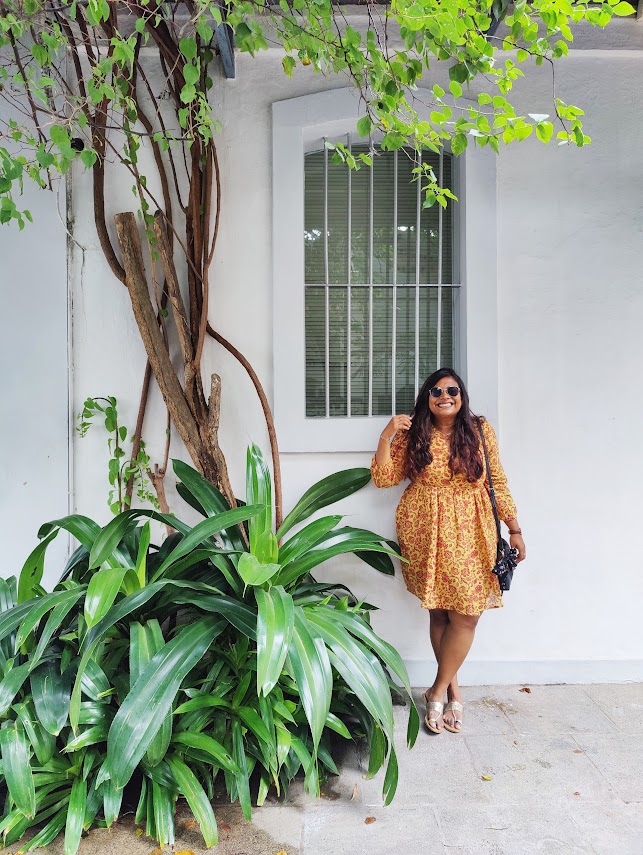

- By: Riyanka
- Feb 25, 2019
- (0) Comments
Cape Schanck: Victoria’s Hidden Paradise, Just An Hour From Melbourne
It’s always special to meet someone who’s been living in a place for years because they often know the best hidden gems that don’t appear in regular travel guides! It happened to me before, and recently, when I was in Melbourne.
I was sitting with my phone, browsing through “Best things to do in Melbourne,” and was just about to book a trip to Phillip Island, a pretty pricey one, to be honest. That’s when my kind host, whom I lovingly call Shibu Uncle, offered to take me on a drive to Cape Schanck and suggested we pack a little picnic. I quickly Googled the place, and within 30 seconds, I was in! I could already tell this would be much more fun than another group tour — though I didn’t expect it to feel like my own private one.
We started from Mt Waverley, a suburb in the southeast of Melbourne where we were staying. It took us about an hour to reach Cape Schanck, around 84 km away. (If you’re heading there from Melbourne City, it’s roughly 100 km and takes about an hour and a half by car.)
As I mentioned earlier, it was almost empty when we arrived — only two other cars were parked there. Even though it was summer, the chilly South Pacific winds hit me when I stepped out of the car. As we made our way to the beach, I could hear the waves crashing against the rocky shore. And in the distance, standing tall and proud, was the Cape Schanck Lighthouse.

Table of Contents
ToggleHere’s All You Need To Know About Cape Schanck Lighthouse & The History!
Cape Schanck is one of those places that instantly makes you feel at peace. With its dramatic landscapes, untouched wild beaches, rugged cliffs, and a scenic wooden trail overlooking the ocean, it’s the perfect escape from the busy buzz of city life.
Tucked away in Victoria’s beautiful Mornington Peninsula, Cape Schanck has a rich history. The lighthouse here was built in 1859 using local limestone, and its unique lantern was designed to guide sailors safely past the rocky coastline and prevent shipwrecks.
There’s a good parking area near the entrance, and if you’re interested in learning more, you can join a guided tour of the lighthouse. Tickets are available at the Cape Schanck kiosk, located right near the carpark. The tour includes a climb up a narrow, steep staircase leading to the balcony of the light station. Be sure to wear comfortable shoes for this part! The guide will share stories about the lighthouse’s past and its role in keeping ships safe. You’ll even get to peek inside the lamproom and see the powerful 1000-watt tungsten-halogen bulb that has lit the way for many vessels over the years.
Once you reach the top, you’ll be rewarded with breathtaking views of the Southern Peninsula coastline and the vast stretch of the Bass Strait. It’s truly a sight to remember.
Fun Fact: Cape Schanck Lighthouse is one of the first lighthouses ever built in Australia — and one of the few that’s still in operation today.



A Breezy Walk Down to the Coastline of Cape Schanck and Enjoy the Pacific Chills!
Just like I mentioned before, a wooden track takes you all the way to the edge of Cape Schanck, and honestly, it’s one of the most stunning places I’ve ever laid eyes on. There were moments along the walk where it felt like the path simply disappeared into the ocean, as if I’d have to leap right into the waves. The icy winds from the Pacific kept catching us off guard, sending little chills down our spines. But the view of the lighthouse standing tall against the horizon, along with the rugged coastline, was more than enough to keep us going.
When we finally reached the end of the walkway, we found two paths in front of us. One led to a small, rocky shore where the waves crashed fiercely, while the other opened up to a wider beach scattered with tide pools. These little pools were full of life, home to snails, seaweed, shellfish, plankton, and other tiny marine creatures, all going about their business in peace.
There were a few people exploring the broader beach, but the rocky side was completely empty. Naturally, I felt drawn to the quieter side first. As I stepped closer, the waves welcomed me with a strong splash, leaving me half-soaked but grinning. With cliffs rising on either side, the turquoise sea rolled in like a celebration, its frothy waves crashing with confidence. It felt like time had stopped. I was so lost in the moment that I didn’t even realize how late it had gotten until Shibu Uncle gently called me back.



After that, we wandered over to the other side, where I dipped my feet into a small pool carved into the rocks over time. I took a moment to watch the tiny marine life thriving there, moving gently beneath the surface. With the Pacific breeze brushing against my face and the cool water calming my senses, it truly felt like one of life’s simplest, purest pleasures.
If you’re planning a visit to Cape Schanck, just know — you can easily spend an entire day here. It’s not the kind of place you rush through. Best to keep your schedule open and let yourself soak up all the beauty around.
We wrapped up our day with a cozy little picnic at the peaceful Fingal Picnic Area, about two kilometers north of Cape Schanck. Nestled in the woods, it’s the perfect place to slow down, enjoy a home-cooked meal, and breathe in the fresh, earthy air. As the sky began to fade and darkness gently settled in, we made our way back to Mount Waverley, holding onto the joy and calm that the day had brought us.
Pro Tip: Melbourne has no shortage of things to do — the list is long and tempting! But do yourself a favor and set aside a full day for Cape Schanck. Trust me, you’ll be glad you did.





Frequently Asked Questions About Cape Schanck
1. Where is Cape Schanck located?
Cape Schanck is situated at the southernmost tip of the Mornington Peninsula in Victoria, Australia. It’s about 100 km (a 1.5-hour drive) from Melbourne City.
2. How do I get to Cape Schanck from Melbourne?
You can drive from Melbourne via the Mornington Peninsula Freeway or take public transport to Frankston and then a bus to the surrounding area. However, self-driving is the easiest and most flexible option.
3. Is there an entry fee for Cape Schanck?
Access to Cape Schanck and its walking trails is free. However, a small fee applies for a guided tour of the lighthouse. Tickets can be purchased at the Cape Schanck kiosk.
4. What are the opening hours of Cape Schanck Lighthouse?
The lighthouse is usually open for guided tours between 10 AM and 4 PM, but timings may vary by season or weather. It’s best to check ahead with Parks Victoria or the Mornington Peninsula tourism website.
5. Can I climb the lighthouse at Cape Schanck?
Yes! Guided tours include a climb to the top of the lighthouse, where you can enjoy panoramic views of the coastline and the Bass Strait. Comfortable footwear is recommended for the steep stairs.
6. What can I do at Cape Schanck?
Popular things to do include:
Walking the scenic boardwalk trail
Explore the rock pools
Visiting the lighthouse
Enjoying coastal photography
Having a picnic at Fingal Picnic Area
Watching the sunset over the cliffs
7. How much time should I spend at Cape Schanck?
Plan to spend at least 3 to 4 hours. Many visitors prefer to stay for the whole day to explore the trails, have a picnic, and relax while taking in the stunning views.
8. Is Cape Schanck suitable for kids and families?
Yes, Cape Schanck is family-friendly. The walking trails are well-maintained, and the picnic areas offer a safe and peaceful environment. However, watch kids closely near the rocky shores and cliffs.
9. Are there any facilities at Cape Schanck?
Yes, there’s a car park, toilets, a small kiosk (seasonal), and picnic areas. Bring water, snacks, and sun protection, especially if you plan a longer visit.
10. When is the best time to visit Cape Schanck?
Cape Schanck is beautiful all year round, but spring and summer offer the best weather for outdoor activities. Even in summer, it can be windy and cool, so pack a light jacket.
11. What should I wear when visiting Cape Schanck?
Wear comfortable walking shoes, bring layers (the weather can change quickly), and don’t forget a hat, sunscreen, and water.

About Me
An absolute foodie and a die-hard ‘mountain-aholic’, I love to read and write! (Give me a book and I’ll love you all the more!)
Over the last few years, I have had the opportunity to travel to a lot of places across India and abroad, and I escaped to the mountains often – blame it on my ardent love for the quaint Himalayan towns and Lemon-Honey-Ginger tea!
Subscribe To My Newsletter!










